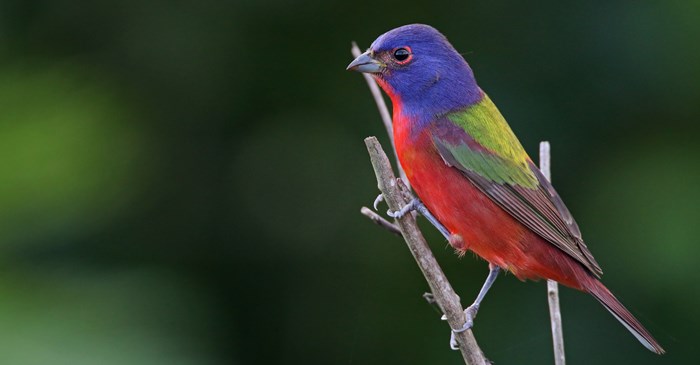Splashed with red, blue, green, and yellow, the male Painted Bunting is one of the most colorful songbirds in North America. The female Painted Bunting’s colors are more subtle, with a yellowish-green back and a creamy yellow belly, but is no less stunning. The Cornell Lab and the Smithsonian Migratory Bird Center have joined forces to gather much-needed wintering information on this amazing species. Loss of habitat from development, along with climate change, sea level rise, and the illegal bird trade have combined to caused the eastern population of Painted Buntings to plummet.
“Recent results from the North American Breeding Bird Survey have shown that populations of eastern Painted Buntings that breed farther south have declined much faster than northern populations,” says Cornell Lab researcher Viviana Ruiz who is co-leading the effort to collect information about the species. “Knowing where Painted Buntings spend the winter is critical if we are to develop effective strategies to help conserve this iconic species year round.”
FeederWatchers in states such as Florida, Georgia, and South Carolina can help this research just by participating in Project FeederWatch as usual. Every count submitted will tell researchers where Painted Buntings occur, and also where they do not occur. “Using observations of Painted Buntings that FeederWatch participants have submitted, we have been able to get a sense of where southeastern populations are likely to winter in the United States,” says FeederWatch leader Emma Greig. “We don’t know the relative importance of these sites because of large gaps in information. FeederWatch participants can contribute significantly to the conservation of this beautiful bird by helping us map their winter distribution.”
Republished with permission from The Cornell Lab of Ornithology. Originally published by Project FeederWatch. A citizen science program by The Cornell Lab of Ornithology and Bird Studies Canada.
